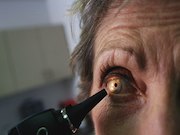Generational association remains significant after adjustment for age, sex, other confounders
FRIDAY, Nov. 17, 2017 (HealthDay News) — There was a decrease in the five-year risk for age-related macular degeneration (AMD) by birth cohorts throughout the 20th century, according to a study published online Nov. 16 in JAMA Ophthalmology.
Karen J. Cruickshanks, Ph.D., from the University of Wisconsin-Madison, and colleagues examined data from the longitudinal cohort Beaver Dam Eye Study and the Beaver Dam Offspring Study. Data were included for 4,819 adults at risk for developing AMD based on fundus images obtained at baseline visits.
The researchers found that the five-year age- and sex-adjusted incidence of AMD was 8.8, 3, 1, and 0.3 percent in the Greatest Generation (born 1901 to 1924), the Silent Generation (born 1925 to 1945), the Baby Boom Generation (born 1946 to 1964), and Generation X (born 1965 to 1984). Each generation was more than 60 percent less likely to develop AMD than the previous generation after adjustment for age and sex (relative risk, 0.34). After adjustment for multiple confounding variables — including age; sex; smoking; educational attainment; exercise; levels of non-high-density-lipoprotein cholesterol and high-sensitivity C-reactive protein; and use of nonsteroidal anti-inflammatory drugs, statins, and multivitamins — the generational association remained significant (relative risk, 0.4).
“Factors that explain this decline in risk are not known,” the authors write. “However, this pattern is consistent with reported declines in risks for cardiovascular disease and dementia, suggesting that aging Baby Boomers may experience better retinal health at older ages than did previous generations.”
Copyright © 2017 HealthDay. All rights reserved.








